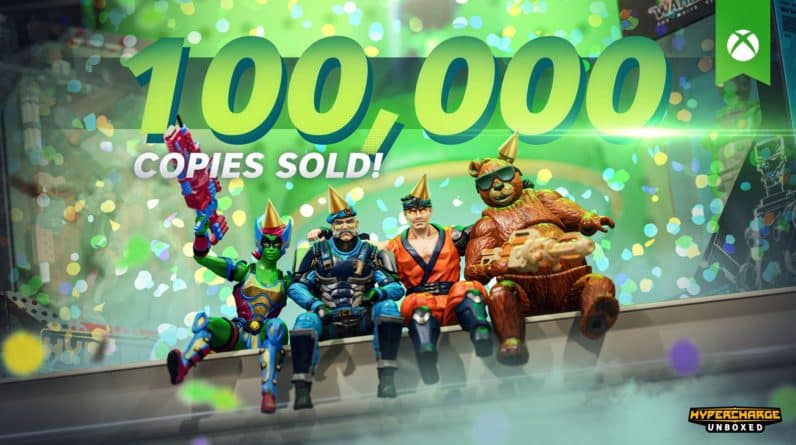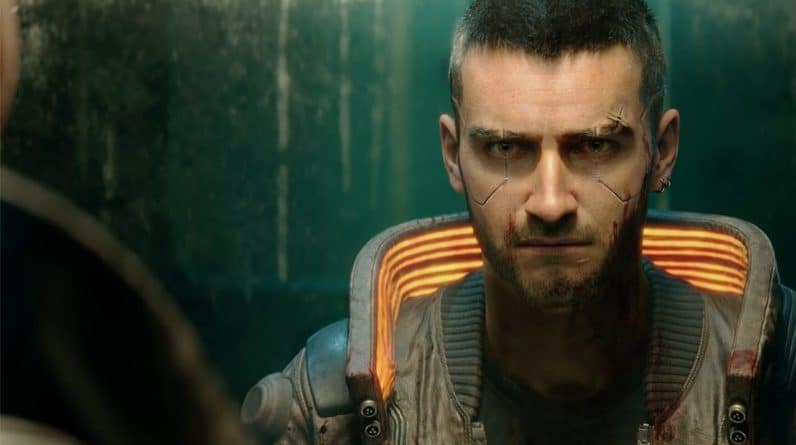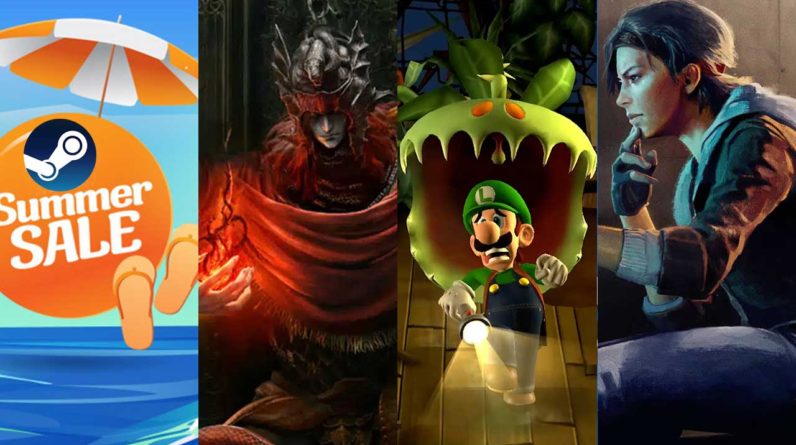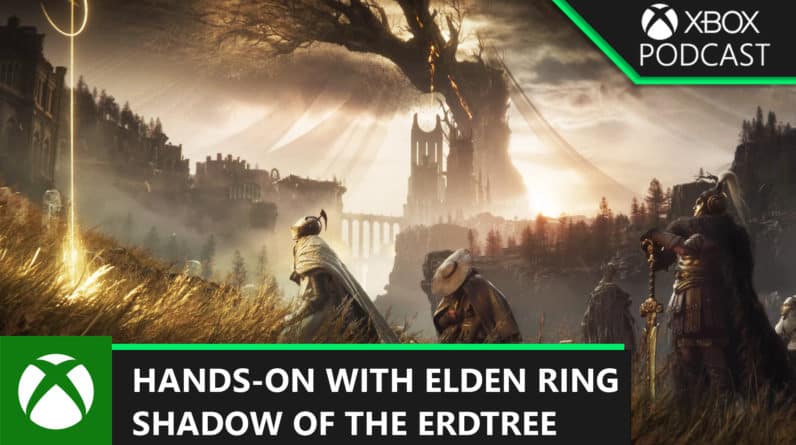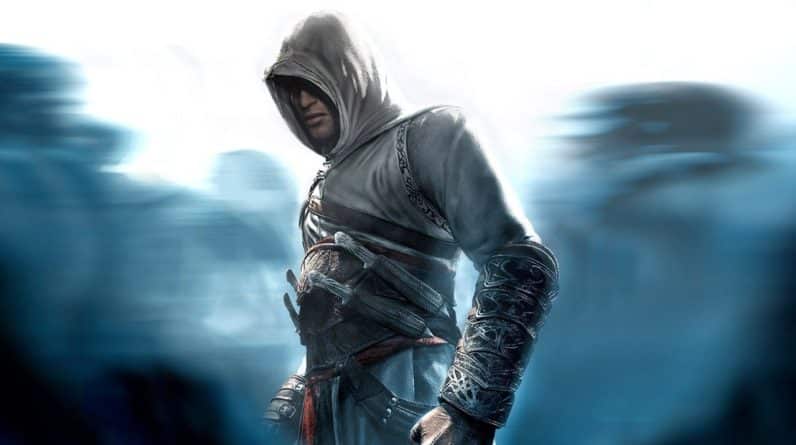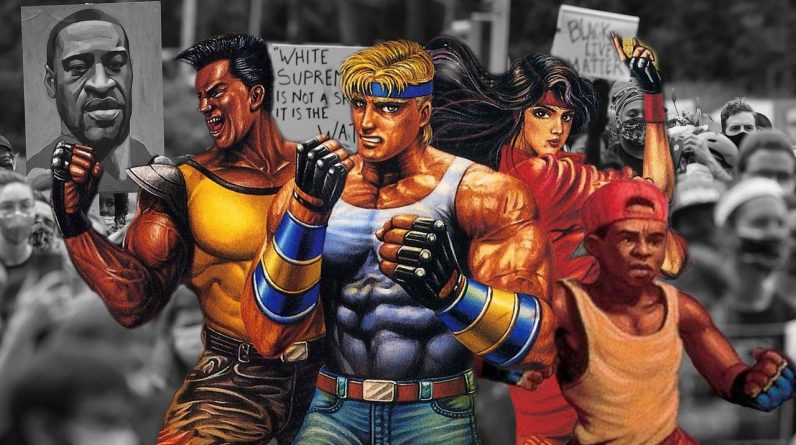
Almost 30 years after its initial release, Streets of Rage still has staying power — and not just because of nostalgia. The 2D side-scrolling beat ’em up series taps into strong anti-establishment themes, and has a bizarre history of finding itself aligned with important flashpoints in historic uprisings.
As I’m sure it does for many players, Streets of Rage reminds me of some of the best times in my childhood. My younger brother and I spent hours beating up Mr. X’s villainous syndicate of criminals and corrupt cops, and arguing over who would get to play as Eddie “Skate” Hunter (the younger brother of SoR1’s Adam).While we button-mashed our way towards Mr. X on our native East Coast, however, we had no idea about the unrest that had taken place months earlier on the other side of the country. We didn’t know about the real-world uprising that had taken place in Los Angeles in the wake of the Rodney King verdict (when a jury acquitted four police officers who were filmed beating King on video) just months earlier.
Streets of Rage 2 wasn’t just about generic antiheroes fighting the bad guys – it also tapped into the social tension of the times. That angst manifested itself politically for some, and in plenty of pop culture, too, from rap groups like NWA, or movies like Spike Lee’s Malcolm X film, which opened with a scene of the King beating. Our own cultural pride manifested itself in a different way – we associated with characters who looked like us. My brother and I fought over who would play as Skate because, even in pixelated form, we identified with his brown complexion and backwards cap. As kids who grew up playing with toys like Sun-Man (the now-defunct Olmec Toys’ alternative to the He-Man series) and in a time when Black protagonists in video games were rare, seeing not just a Black playable character but a story revolving around his family was a moving reflection – even if we didn’t realize the full impact of its cultural resonance right away.
Real-World Rage
We often remember the ‘90s fondly as a time of multiculturalism and new technological trends, but there were other radical and racially-charged moments that defined the decade. From the L.A. Riots to the end of South African apartheid, the early 1990s offered consistent reminders that what was “legal” wasn’t necessarily “moral.” That philosophical throughline was (and still is) the very essence of the Streets of Rage franchise. It seemed like a direct response to the pervasive representation of “cities as a warzone” that popped up throughout the ‘80s, apparent in movies like RoboCop or Escape From New York. Presidential and political rhetoric from decades past crystallized in both a “war on crime” and “The War on Drugs”, which created a culture of (over)policing that fueled rebellious sentiments.
“
That being said, Streets of Rage being “anti-establishment” didn’t mean that it was “anti-cop.” One of the lasting images from the first game was the police car special attack, a move that would hail an officer to fire a napalm cannon at enemies; a handy screen-clearing tactic. But there’s a dark side to this police assist: It evokes painful images of historic police violence, such as the 1985 MOVE bombing in Philadelphia where police killed 11 people (including five children) and burned down 65 homes.
In the second game, the police car special attack was gone. Instead, each character had their own special move, like the Corkscrew Kick or Knuckle Bomb. The decision to remove police backup entirely was an important distinction: Ex-cops employing the resources of the police — the establishment — sent a mixed message, especially when a core aspect of the story revolved around corrupt cops. Whether or not the developers made the change in good conscience was never explicitly said, but the switch to individual special moves ultimately reinforced the series’ anti-establishment core.
Leaning into those themes, coupled with the new and unique experience that each character offered, paid off. Beating up legions of goons to save a city besieged by crime and corruption was clearly appealing to many players – the game was such a hit that it became one of the cartridges that was sold with the Sega Genesis system.
Given its immense popularity, it was surprising that the Streets of Rage series ended up taking a 25-year hiatus after Streets of Rage 3 was released in 1994. As PvP fighters like Mortal Kombat and Street Fighter II took off, side-scrolling beat ’em ups — which offered little evolution in their gameplay — were left in the dust. As police brutality continued in the real world, it ceased to be reflected or explored in video games.
Don’t Call It a Comeback
But in 2018, the teams at French video game studio Dotemu partnered with Guard Crush Games and Lizardcube (best known for the Rage-inspired Streets of Fury and their remake of Wonder Boy: The Dragon’s Trap, respectively) revived the dormant franchise, and in April 2020, Streets of Rage IV was released.
“
The goal, according to Dotemu CEO Cyrille Imbert, was to introduce new players to Streets of Rage while still appealing to longtime fans. What evolved was a labor of love – a game “made by fans.”Instead of a reboot, Dotemu decided the originals deserved to stand on their own. “There was no point in doing a remake because those games were cool,” Imbert said in an interview with IGN. “There was nothing that needed to be remade. The idea was to keep everything that made those [earlier] games great, but put it in a more modern context by adding different [features].”
Even though it never appeared directly in-game, this meme (originally from a 2013 Cracked.com photoshop contest) is a perfect distillation of Streets of Rage’s anti-establishment themes: In a dystopian world where the police are mostly bought and paid for by organizations with lots of resources and little interest in actual public welfare, the only thing we can rely on is ourselves. And while the team realized that bringing back Streets of Rage would introduce the stylized take on “fighting the powers that be” to a new generation of players, they couldn’t have possibly known how its release would coincide with current events, just as Streets of Rage 2 had done nearly 30 years earlier.
History Repeats Itself
A little over a month after the release of Streets of Rage 4, George Floyd was killed by police in Minnesota during an arrest on May 25. The same concerns, urgency, and anger raised during the Los Angeles riots of 1991 had resurfaced again.
“
Imbert, a native Frenchman whose Dotemu company is based in Paris, is no stranger to public outcry due to various injustices.“In France, it resonates here because we also have police violence. We also have racism within the police. Probably for different reasons, probably at a different frequency, but still, it’s there,” Imbert said. “It’s another occasion to say, ‘Hey, we’re not over this.’”
George Floyd and Rodney King are two well-known names in a sea of other victims – now including Jacob Blake, whose paralyzation at the hands of police recently revitalized media coverage of the ongoing protests. Many of these victims never make the headlines, and even in the midst of marches at a level not seen since the Civil Rights Movement of the 1960s, clashes between protesters and police are still precarious. Police across the country are doubling down on excessive use of force, and while media coverage may focus on clashes in major metropolitan cities such as Chicago and Portland, or towns where inciting incidents take place like Kenosha, but protests and subsequent crackdowns are also occurring in smaller towns nationwide as well.
With Streets of Rage, lightning struck twice — not just in terms of SoR4’s success, but with its strangely prescient timing around civic upheaval. Sure, it may be coincidental, but it also says a lot that so little has changed in almost 30 years. The question for all of society then becomes, how do we change things for the better?
As a kid, I didn’t have those answers, and I still may not, even as an adult – but I’ve at least learned I have the spirit to keep fighting. It didn’t matter how many times I lost to Shiva or Mr. X, I would continue until I beat the game – and that’s the lesson. The protests taking place all over the world underscore the need for vigilance and action when it comes to social progress. As Cyrille put it simply during our discussion, “We need to point out things when they’re wrong, so that we can change things for the best.”
Ken J. Makin is a freelance writer and the host of the Makin’ A Difference podcast. Before and after commentating, he’s thinking about his wife and his son. He urges you to support the Philadelphia Bail Fund if you’re able.
Black lives matter. Click here to donate to some of the charities and resources IGN is supporting, and some additional options for those who wish to take action along with us.

